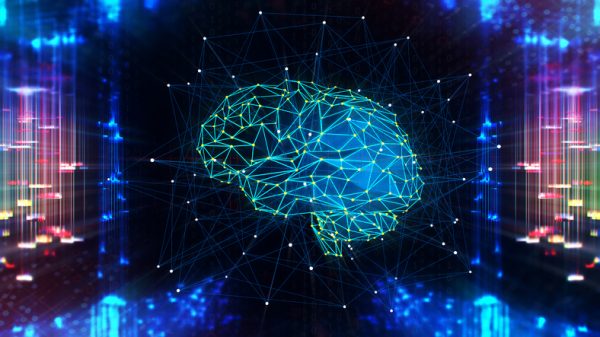
In its Crossing the Quality Chasm: A New Health System for the 21st Century report, the Institute for Healthcare Improvement (IHI) identifies six distinct “Aims for Improvement” addressing the divide between good health care and the health care that people actually receive. Patient-centered service is a leading focus.
Donald M. Berwick, MD, MPP, former president and chief executive officer of IHI and former administrator of CMS said, “We are guests in our patients’ lives instead of hosts in our healthcare organizations.” Being guests in the lives of patients means being welcomed in, not waited for. This requires that we prioritize patient convenience–something artificial intelligence (AI) in healthcare can help deliver.

Health Benefit Consultants, Share Your Expert Insights in Our Survey
W. Bryan Smith W. Bryan Smith is the Co-Founder and CTO of Myia Health. Mr. Smith is a multidisciplinary executive leader with 20+ years applying advanced analytics, machine learning, and interactive data visualization methods to help organizations and individuals maximize the value of their data as an asset. Before joining Myia Health as Co-Founder and […]
Multiple office visits for checkups and routine care are being replaced with remote monitoring using advanced human-generated data devices. When this monitoring is combined with online consultations, guided by AI, providers can save time and improve the accuracy of their diagnoses. From eye and CT scans, X-rays and mammograms, to predicting ovulation cycles, automation and robotics not only expedite medical procedures but also improve outcomes.
Another objective in the IHI report states that healthcare should occur in a timely fashion. “We think waiting is defect,” Berwick wrote. “At least non-instrumental waiting, waiting that no one intends or that doesn’t carry any information with it. So we’re asking for less waiting in our system — for both patients and those who give care — as a centralized characteristic of the system.”
Not all procedures in everyday healthcare delivery require human interaction and interpretation. Continuing to operate under this assumption is placing an increasing burden on the existing care delivery systems. AI, virtual reality, and robotics not only enable quicker remote diagnosis and monitoring, but they can also be used directly for treating anxiety, stress, and reducing pain. The more accessible this “virtual” healthcare becomes to patients, the greater the number that can be served within a given time period.
Reinforce Doesn’t Mean Replace
In spite of the hype, appropriately leveraging technology does not mean physicians and caretakers will be replaced by robots altogether, as some fear. These still-essential, highly skilled workers are merely afforded more time to dedicate to sophisticated, more personalized procedures and processes. More time to use their human neural networks to the fullest potential.

A Deep-dive Into Specialty Pharma
A specialty drug is a class of prescription medications used to treat complex, chronic or rare medical conditions. Although this classification was originally intended to define the treatment of rare, also termed “orphan” diseases, affecting fewer than 200,000 people in the US, more recently, specialty drugs have emerged as the cornerstone of treatment for chronic and complex diseases such as cancer, autoimmune conditions, diabetes, hepatitis C, and HIV/AIDS.
“When I grow up I want to be a doctor because I want to lose my soul to notification-clicking and note-writing,” Curai data scientist, Jen Jen Chen facetiously wrote in a Medium post. Her thesis supporting the idea that data and AI can eliminate monotony in delivering healthcare.
The best use of AI is to assist skilled healthcare delivery professionals to perform at the top of their credentials. Integrate many sources of real-world data and then one can use AI to understand if a patient is in trouble, often before they are symptomatic. This integration of human capability with AI is essential to achieve optimal outcomes in a system as complex as healthcare.
The Inclusive Future for Everyone
Those months-out appointments for healthcare specialists can become a thing of the past with virtual care. No longer does a rare disease specialist need to travel from institution to institution to tend to appointments. AI can afford doctors the ability to spend more important, one-on-one time with patients only when it’s needed.
In a world of grueling Sci-Fi movies and robot world domination, the initial idea of robots and AI doing the work of doctors can be a fearful one. But the reality of robotic and AI-enhanced doctors isn’t nearly as creepy as tiny robot snakes that slither through your brain. Artificial intelligence and robotics represent some of the greatest leaps and bounds to bridging the chasm between desired and actual healthcare delivery, and they needn’t be feared.
Photo: MF3d, Getty Images
W. Bryan Smith is the Co-Founder and CTO of Myia Health. Mr. Smith is a multidisciplinary executive leader with 20+ years applying advanced analytics, machine learning, and interactive data visualization methods to help organizations and individuals maximize the value of their data as an asset. Before joining Myia Health as Co-Founder and CTO, Mr. Smith served as Chief Scientist at PokitDok, established the global Data Science practice at Sapient, and was the first machine learning hire at Quid. Mr. Smith holds a PhD from Caltech in computational neuroscience











